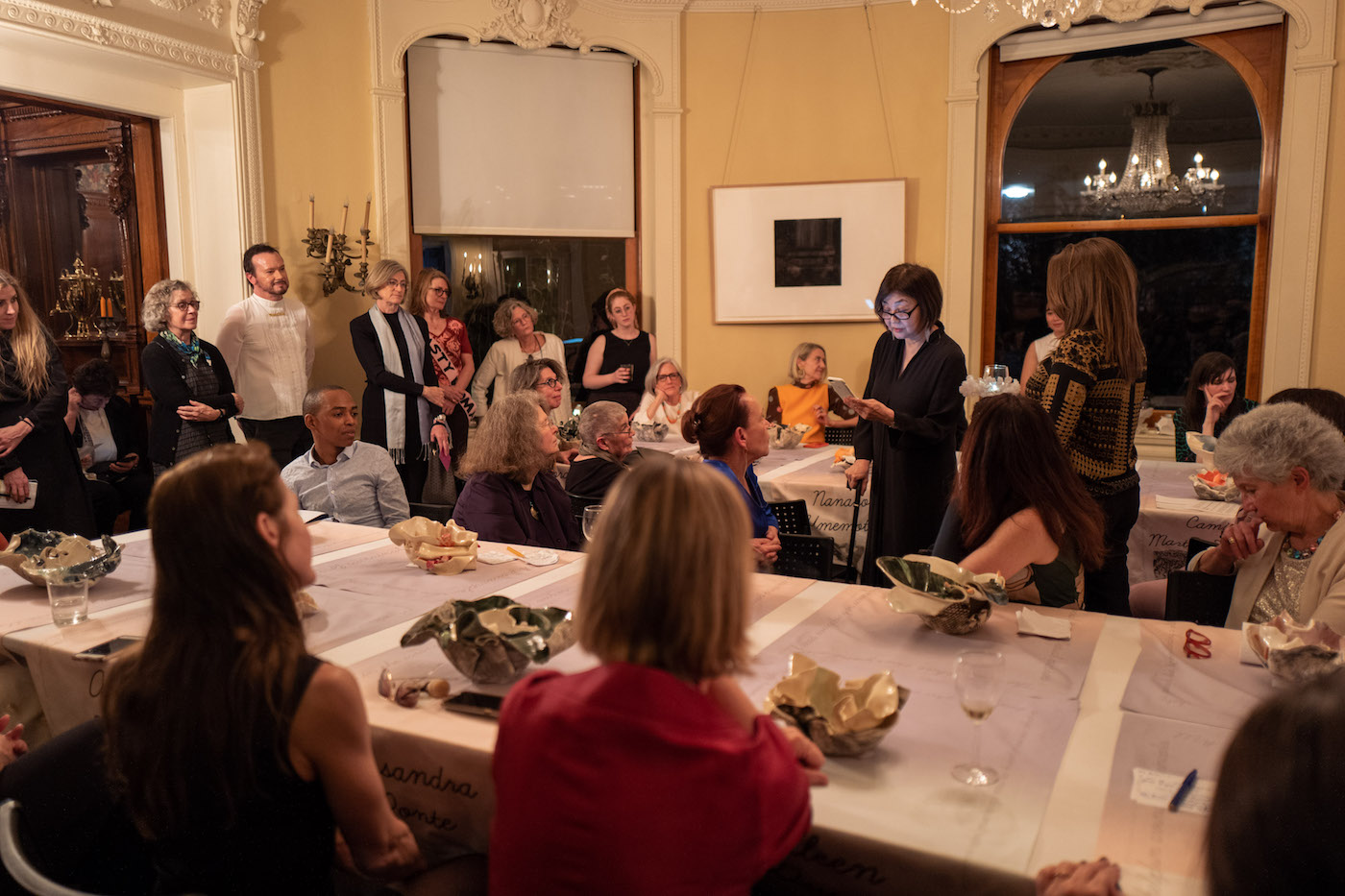
The Mistresses of Pratt Dinner Party (photo by Armon Burton)
In her 1970s installation The Dinner Party, artist Judy Chicago wanted to elevate the overlooked roles of women in global civilization. A massive triangular table was set for 39 individuals from myth and history, from the Mesopotamian goddess Ishtar to birth control activist Margaret Sanger. Embroidered table runners and ceramic place settings were created by a team of artists as a celebration of traditionally feminine arts that had long been disregarded as simply “crafts.”
In launching its own initiative recognizing the legacy of women educators at Pratt Institute, the School of Architecture organized a Dinner Party-inspired gathering with individualized place settings for 41 honored guests. The Monday, March 9 event at the Caroline Ladd Pratt House marked the debut of Mistresses of Pratt, a multifaceted project focused on the contributions to architecture and planning education by female-identifying faculty and alumnae. An ongoing initiative, Mistresses of Pratt will include a digital archive as well as regular events to enhance the knowledge and understanding about these women.
Architecture is a male-dominated field and Mistresses of Pratt celebrates women’s rich history in the discipline as well as their ongoing leadership in the profession and its pedagogy. In welcoming guests to the dinner, Harriet Harriss, Dean of the School of Architecture, gave some context behind the initiative’s name. Back in 2017, she was working on a conference paper and searched online for “masters of architecture,” which only turned up images of men. She said that “finding out about women architects shouldn’t involve detective work” and decided to reclaim the word “mistress”—which prior to the 20th century was more associated with a woman with power or mastery in a field—in her efforts to make these women more visible.
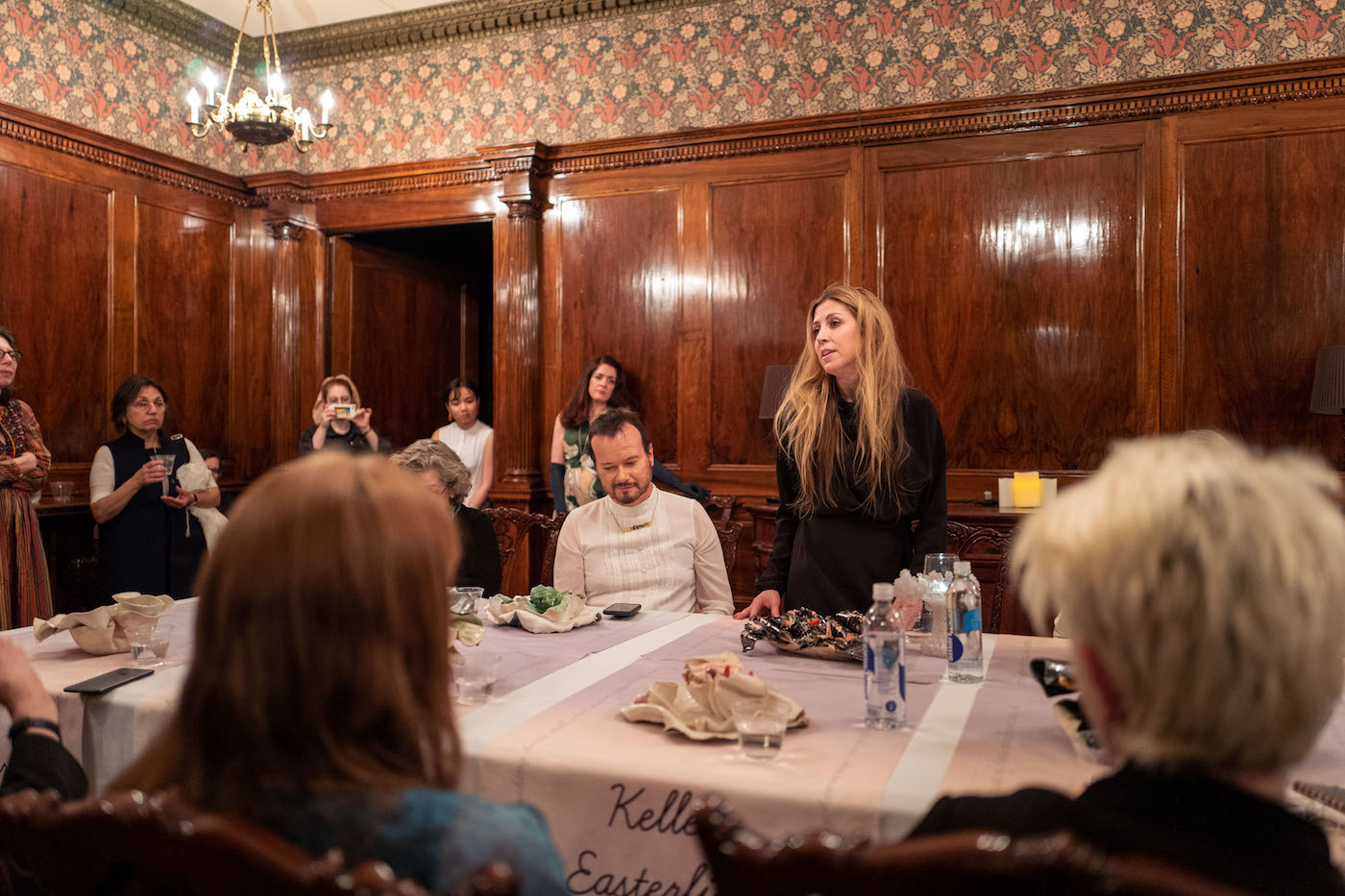
Harriet Harriss, Dean of the School of Architecture, speaking at the Mistresses of Pratt Dinner Party (photo by Armon Burton)
“To be mistresses is to reclaim your right to public life—to leadership, to expertise, to autonomy, and to simple equality,” Harriss said. She added that Pratt is “a school strongly associated with many such women both historically and among us today and we are here to launch the beginning of what will become an institute-wide Mistresses Archive—an initiative determined to restore Pratt women to their respective disciplinary canons, one school at a time.”
Although the initiative is spearheaded by the School of Architecture, it is intended to be expanded across campus as an interdisciplinary collaboration with the inaugural dinner serving as a template for other schools and departments.
In her remarks at the event, Pratt President Frances Bronet said this is “an opportunity to recognize that the success of Pratt is shared among all genders, but that history’s account of the contributions of women has been, at times, overlooked or even misrepresented. The dinner acknowledges the challenges of the past with clarity and honesty so that we can clear the way for a more equitable future.”
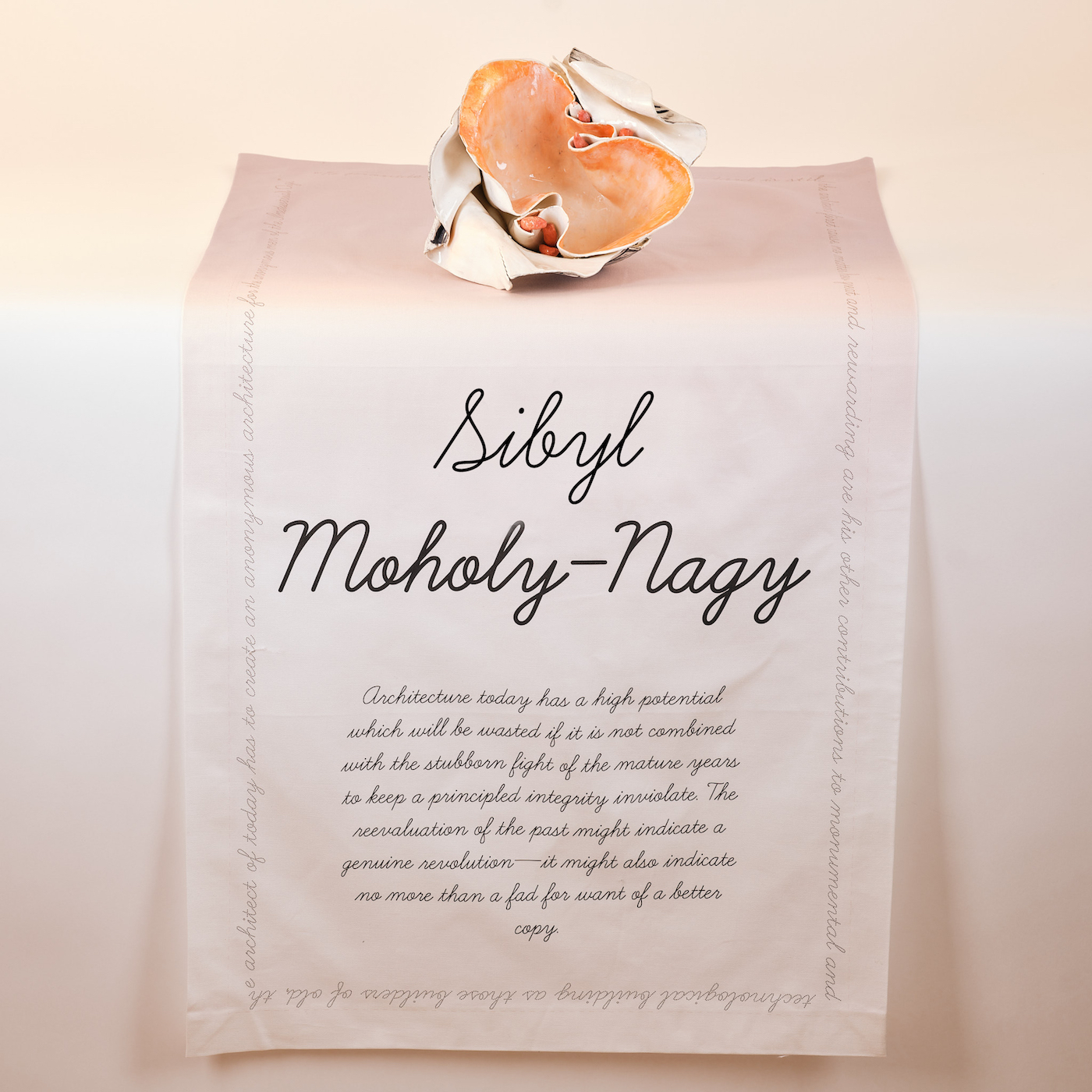
Mistresses of Pratt place setting for Sibyl Moholy-Nagy (photo by Adam Elstein)
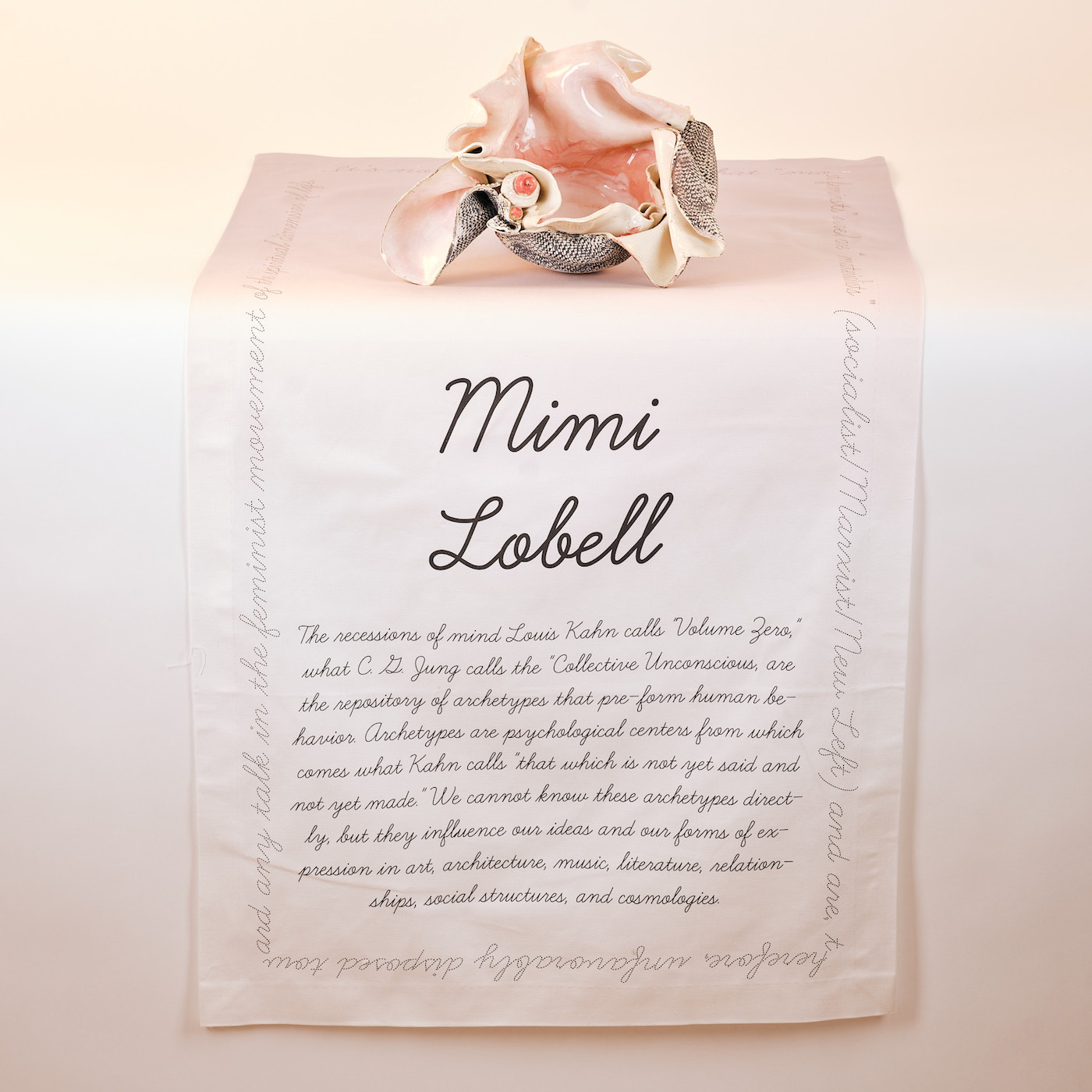
Mistresses of Pratt place setting for Mimi Lobell (photo by Adam Elstein)
In addition to involving the current School of Architecture leaders, Mistresses of Pratt is excavating the stories of the influential women in its past. The March 9 event had place settings for figures like the architecture critic Sibyl Moholy-Nagy, who in 1960 became the first woman to be a full professor of architecture at Pratt, as well as Mimi Lobell, who taught at Pratt from 1972 to 2001 and emphasized in her architectural history course the field’s diverse, non-Western heritage. The dinner also honored a number of the School’s current educators such as Karen Bausman, Adjunct Associate Professor of Undergraduate Architecture, whose place setting was adorned with a flower reminiscent of those that informed the design of her Performance Theater in Los Angeles, and Cynthia Davidson, Visiting Professor of Graduate Architecture and Urban Design (GAUD), whose place setting featured a cover of the architectural journal Log, which she founded in 2003.
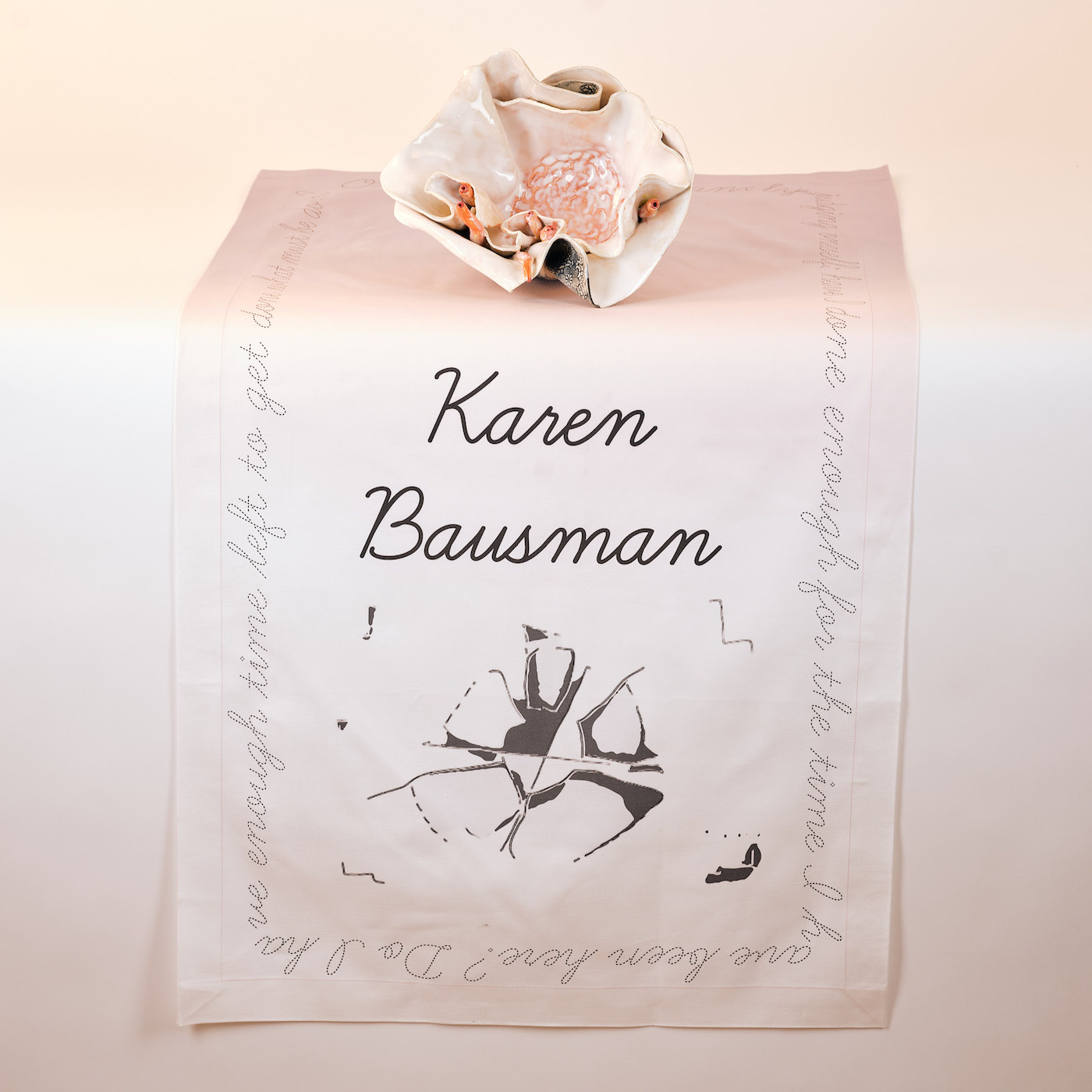
Mistresses of Pratt place setting for Karen Bausman, Adjunct Associate Professor of Undergraduate Architecture (photo by Adam Elstein)
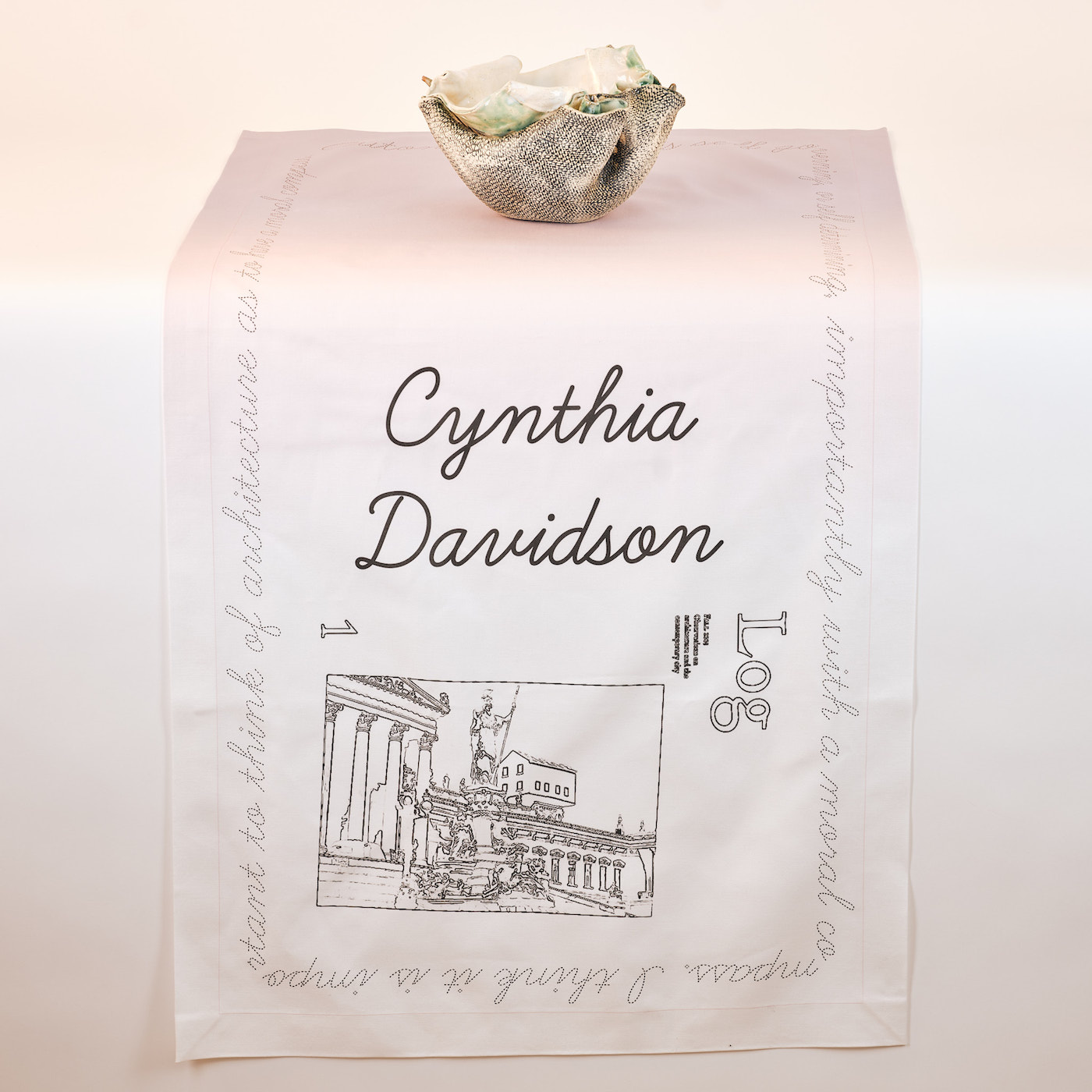
Mistresses of Pratt place setting for Cynthia Davidson, Visiting Professor of GAUD (photo by Adam Elstein)
Just as Chicago’s The Dinner Party involved a group of collaborative artists, the place settings for Pratt’s event were fabricated by a team from across the School of Architecture. Pratt’s Dinner Party and the place settings were designed by Michele Gorman, Adjunct Associate Professor of Undergraduate Architecture, who worked with individuals from around the school on its components. The ceramic bowls, which had undulating shapes and colors inspired by the variations of shells, were sculpted by Dagmar Richter, Professor of Undergraduate Architecture. The glasses were wrapped with computational crochet woven through 3D printing, a project led by Gisela Baurmann, Visiting Assistant Professor of GAUD. These design objects were placed on machine-printed linen banners, each individually embroidered with the name of the honored guest and a biography or image distilling her work, all encircled by a quote encapsulating her practice.
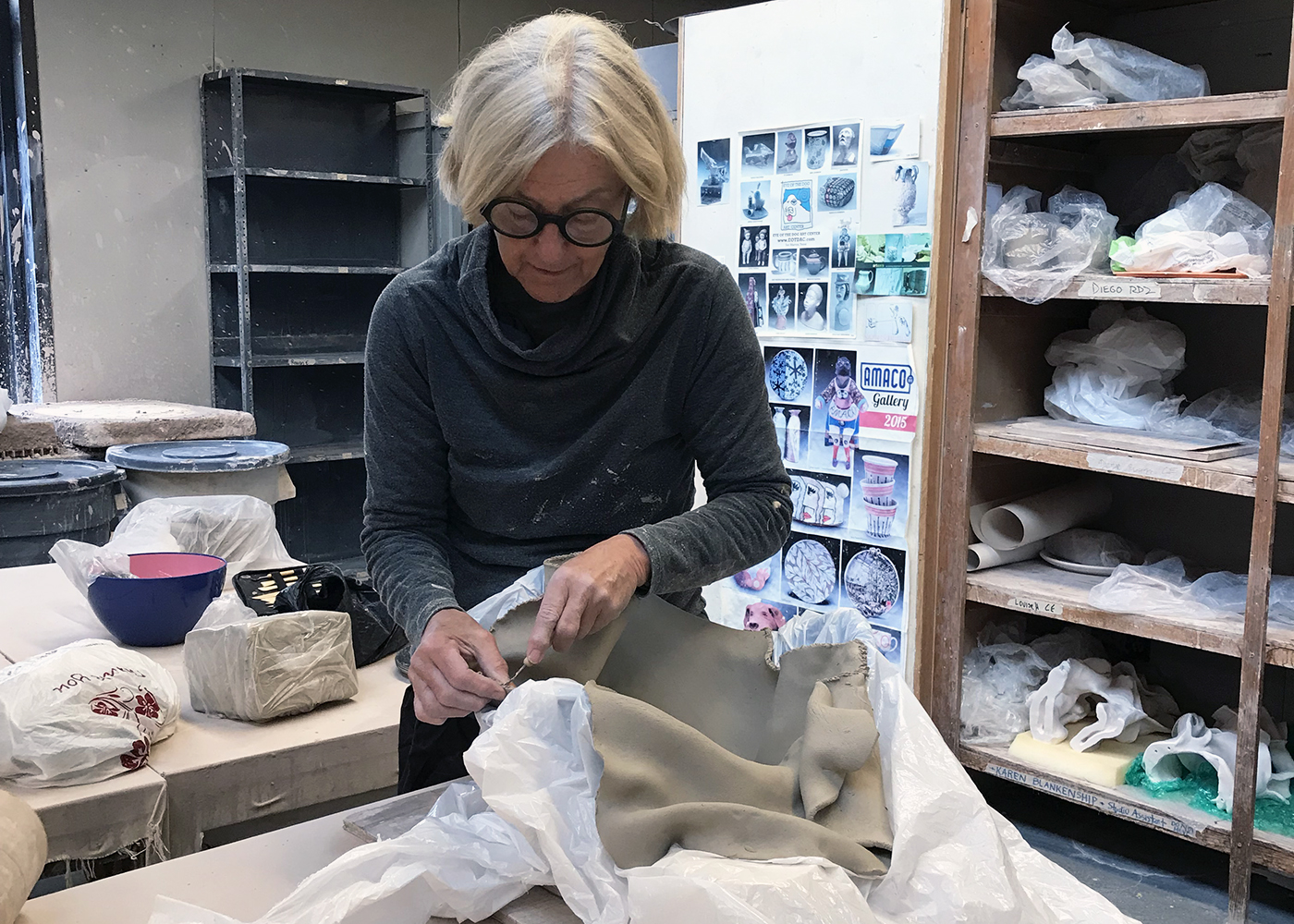
Dagmar Richter, Professor of Undergraduate Architecture, sculpting the Mistresses of Pratt place settings
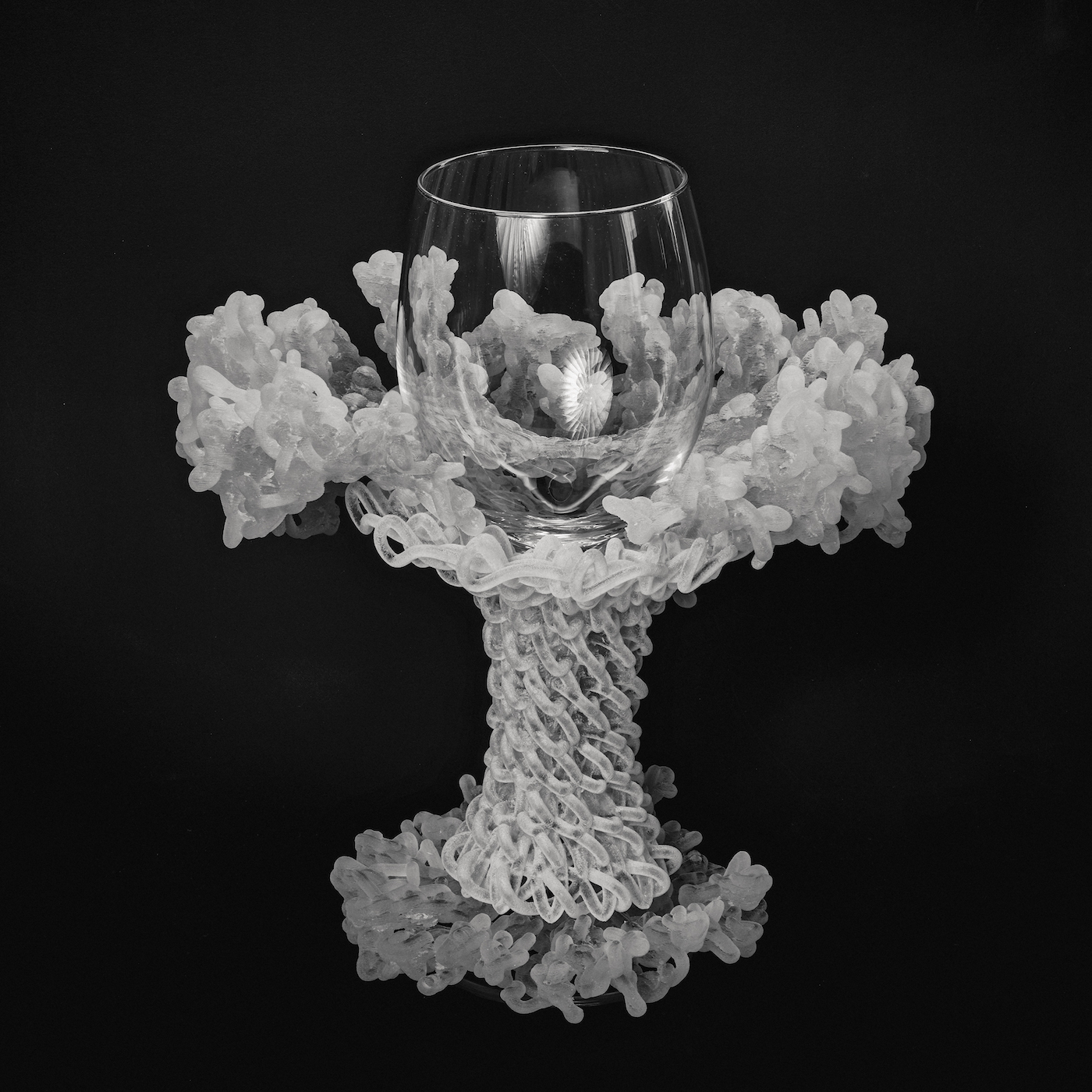
Digital crochet by Gisela Baurmann, Visiting Assistant Professor of GAUD (photo by Adam Elstein)
Along with visibility, dialogue and community were central goals of the gathering. Each guest participated in a discussion around the questions: “What do you believe your place at the table represents?” and “As you sit at this table, what are your future forecasts?” The discussion examined gender and its impact on the profession of architecture while considering how issues of past representation can inform better futures. Maria Sieira, Adjunct Associate Professor – CCE of GAUD, filmed these responses for a planned documentary. The footage will also be incorporated into the Mistresses of Pratt Archive, which will serve as an interactive digital platform for the initiative.
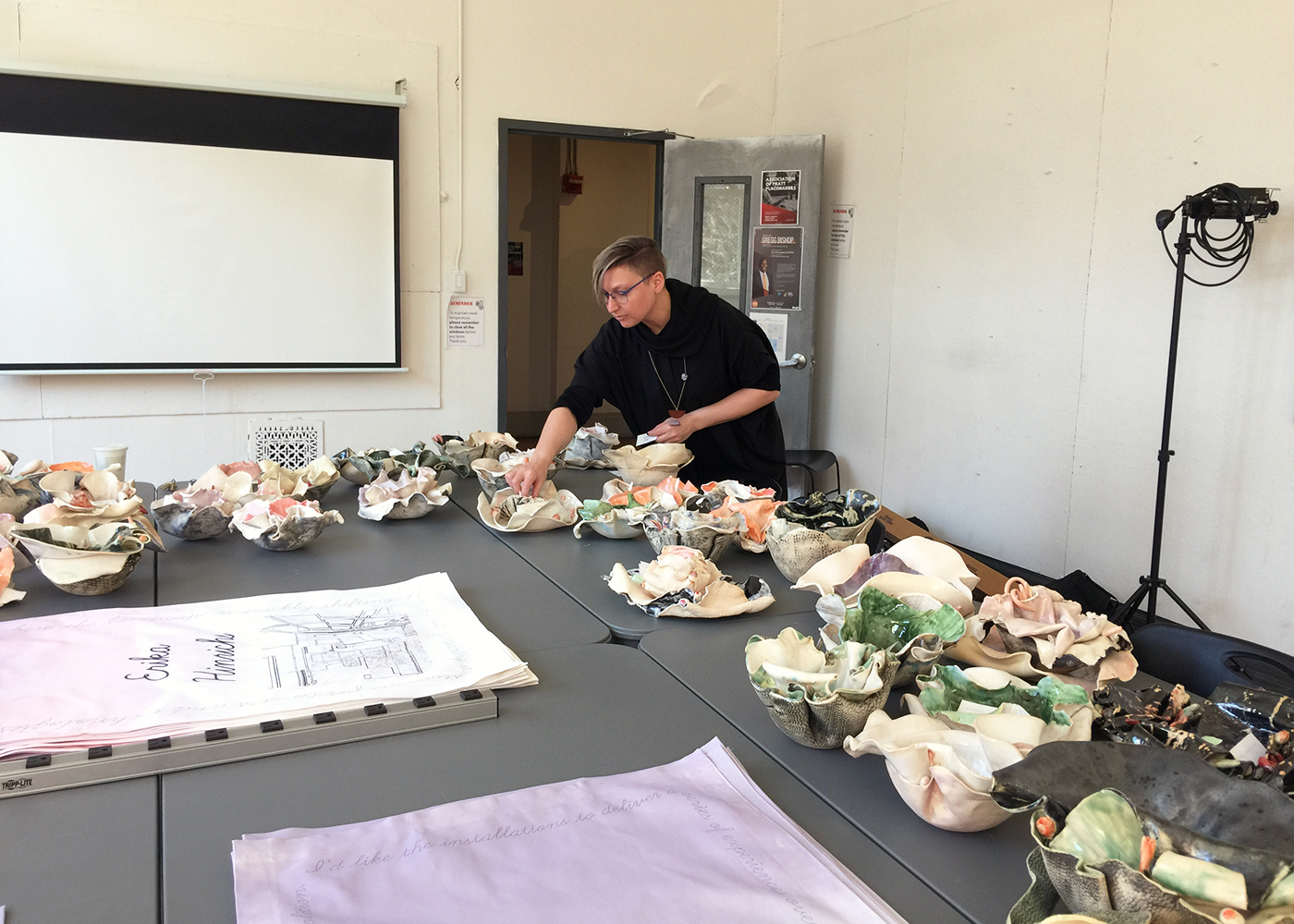
Michele Gorman, Adjunct Associate Professor of Undergraduate Architecture, working on her design for the Mistresses of Pratt Dinner Party
While the Archive is kicking off with the women represented at the dinner, it will continue to evolve, including through a series of programs. Gorman has organized Women in Architecture Wikipedia Edit-a-thons and plans to stage similar events for Mistresses of Pratt.
“The storytelling component of Pratt’s Dinner Party has fed the Archive in two ways,” Gorman said. “First, to gather stories on the biases of the past and how we can work towards a more equitable future. Second, as a way to crowdsource from faculty and alumni with institutional memory on who was missing from the table that will be immediately added to the Archive.”
The Archive is being led by Federica Vannucchi, Adjunct Assistant Professor of Undergraduate Architecture, and Alicia Imperiale, Visiting Associate Professor Undergraduate Architecture, and will involve a living digital archive that will grow and change. A team of Graduate Assistants—including Khue Trinh, Enrique Franco, Nikole Green, Shihua Chang, and Anya Lee—are now expanding their research based on the feedback from the Dinner Party. This will inform future events such as an exhibition, symposium, film, and publication.
There are further plans to conduct deeper research on the history of women at the School of Architecture and interview alumni, former and current faculty, and others who can speak to how women have shaped architectural pedagogy. Transcripts from these interviews will become part of the Mistresses of Pratt Archive so they can potentially be primary sources for things like Wikipedia. Throughout the 2020-21 academic year, the School of Architecture will hold a series of Mistresses of Pratt conversations and workshops to engage the wider Pratt community in promoting a more inclusive campus environment.
A full list of the faculty and alumnae included at the Mistresses of Pratt dinner is available on its dedicated website and the School of Architecture welcomes input on who continues to go unacknowledged. As Ayse Yonder, Professor in the Graduate Center for Planning and the Environment (GCPE), stated in the quote stitched on her place setting: “Women have always found ways to get together in order to share their work, exchange information, [and] support each other.”